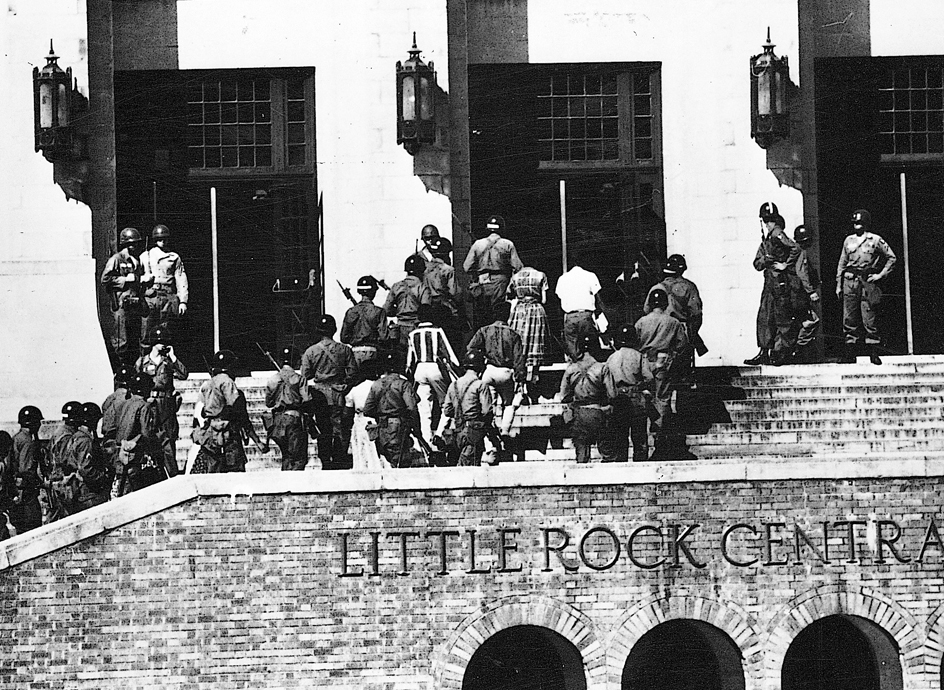Bates, Daisy Lee Gatson (1914-1999), was an African American civil rights activist. She became well known as an adviser to the Little Rock Nine, the group of nine black students who integrated Central High School in Little Rock, Arkansas, in 1957.
Daisy Lee Gatson was born in Huttig, Arkansas, on Nov. 11, 1914. Little is known about her childhood. Daisy was told that her mother had been killed while Daisy was a baby, possibly as a result of race-related violence. Daisy was raised by a foster family. When Daisy was a teenager, she met Lucious Christopher “L. C.” Bates, who had worked as a newspaper reporter. The couple married in 1942.
In 1941, the couple moved to Little Rock to start the Arkansas State Press, a weekly newspaper. The paper reported on civil rights issues and other news of interest to the black community. Daisy and L. C. Bates became active in the National Association for the Advancement of Colored People (NAACP). In 1952, Daisy Bates became president of the group’s Arkansas chapter.
Brown v. Board of Education of Topeka, a 1954 case decided by the Supreme Court of the United States, declared racial segregation in public schools to be unconstitutional. The decision cleared the way—legally, at least—for black students to attend public school with whites. In 1955, the Little Rock School Board adopted a plan to begin integration in the fall of 1957.

Opponents of integration often threatened the Bates family. Terrorists threw firebombs at their house and burned crosses on their front lawn. The family’s involvement in the integration of Central High led to declining advertising revenue at the Arkansas State Press, and they were forced to shut down the paper in 1959.
In 1958, Bates won the Spingarn Medal , the highest honor given by the NAACP. In later years, she worked for the Democratic National Committee, for antipoverty programs, and as a community organizer. Bates wrote a memoir, The Long Shadow of Little Rock (1962), that focused on the integration of Central High. It includes an introduction by former First Lady Eleanor Roosevelt. Bates died in Little Rock on Nov. 4, 1999.
See also Brown v. Board of Education of Topeka ; Eckford, Elizabeth ; Little Rock Nine .
